 This post is the second in a mini-series about my trip to Yunnan Province in Southwestern China. Other posts in this series include Exploring Yunnan Province - Jing Hong in Xishuangbanna.
This post is the second in a mini-series about my trip to Yunnan Province in Southwestern China. Other posts in this series include Exploring Yunnan Province - Jing Hong in Xishuangbanna.
Yunnan Province is a fascinating place to visit. It feels different from the rest of China due to its large population of ethnic minority groups. In fact, Yunnan Province has the most number of minority groups in all of China. There are 55 recognized minority groups in China, and 25 of them are in Yunnan Province. 38% of the the population is minority.
The Dai are the largest minority group in Xishuangbanna, the southernmost prefecture in the province. They are part of the Tai ethnic group, which also includes Thai, Laotians and the Shan people from Burma. For me, visiting this part of China felt more like I was visiting Thailand than China!
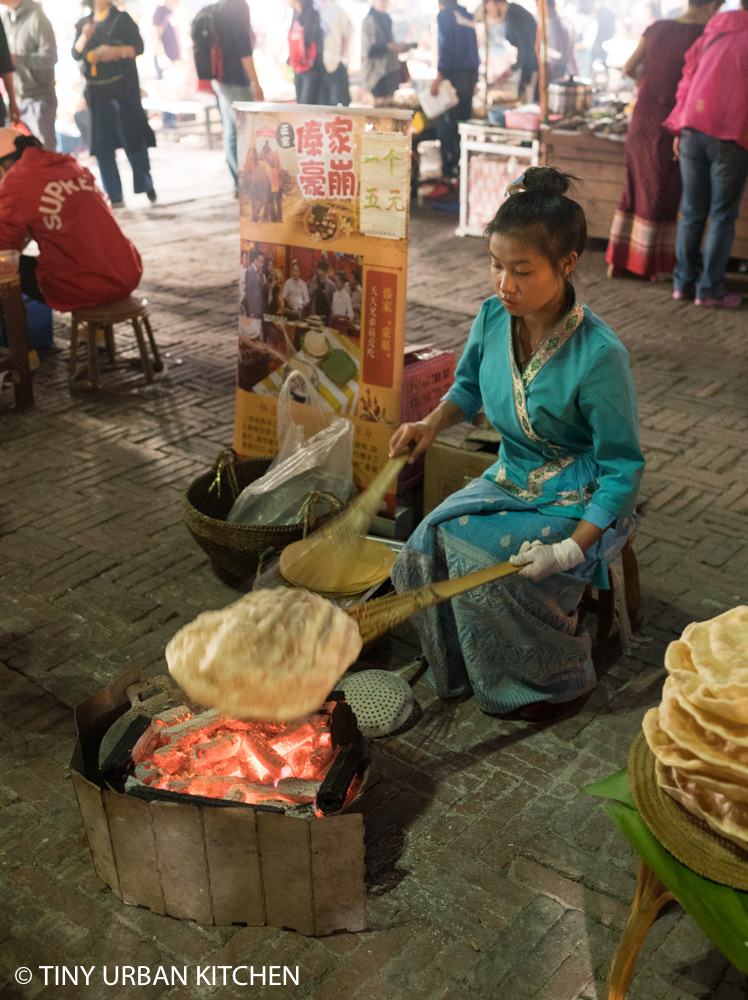 |
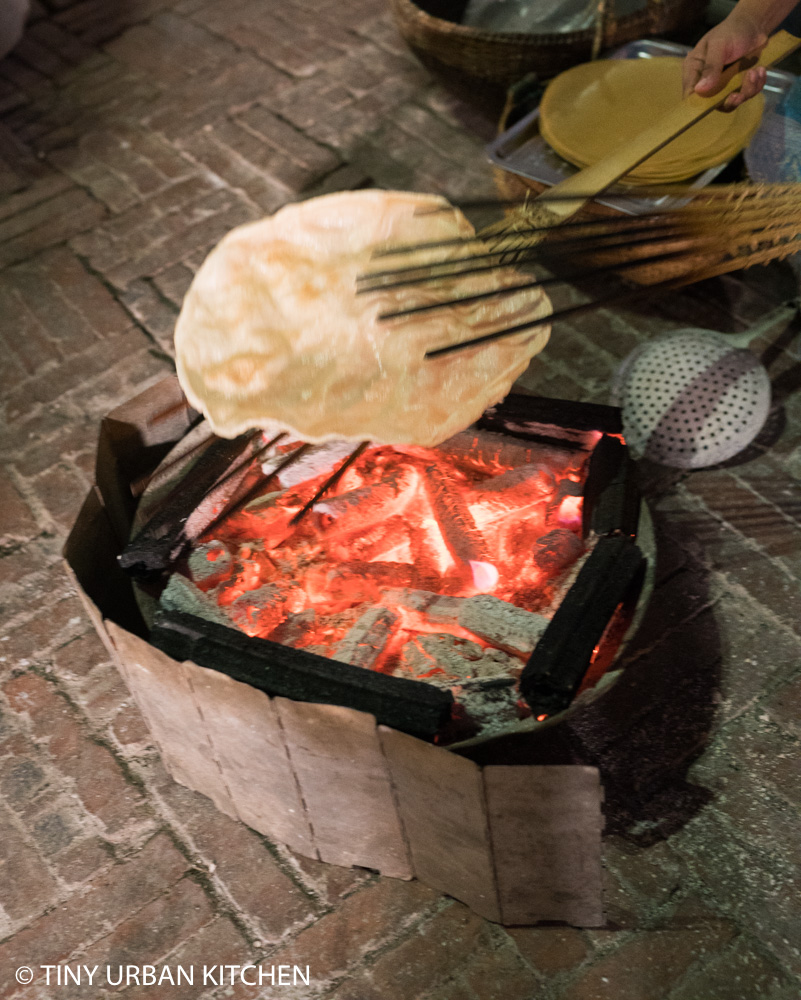 |
There are 1.2 million Dai in China (more in Thailand and Laos). Their traditional dress is colorful and the women often wear buns. They are most known for their water splashing festival, which happens during their new year (right now in mid April!). A huge festival overtakes the city, ending in the biggest water fight you've ever seen in public where people splash each other to no end. The splashing with water symbolizes a form of purification, and splashing others means you are wishing them good luck for the coming year.
Dai cuisine is characterized by four basic flavors: sour, sweet, bitter, and spicy. This is reminiscent of Thai, but bitter replaces sweet, and they don't really use coconut milk or fish sauce. The cuisine is fresh and vibrant, characterized by some combination of (1) fresh herbs (such as cilantro, culantro, mint, garlic, and ginger) + (2) fiery chilis and (3) something acidic (usually lime but sometimes vinegar).
Yunnan province is known to be the most bountiful region in China. Accordingly, Dai cuisine also incorporates lots of great produce as well as wild foraged mushrooms and wild greens.
Below, I've summarized some of the most famous and classic Dai dishes. Enjoy!
This Dai women is selling glutinous rice with a variety of toppings that she has prepared (yes, that is a WeChat QR code on the table for her to receive electronic payments!). You can choose between all sorts of pickled vegetables, dried meat, and different types of "salsas" made from local vegetables roasted, pounded, and mixed with chilis and herbs.
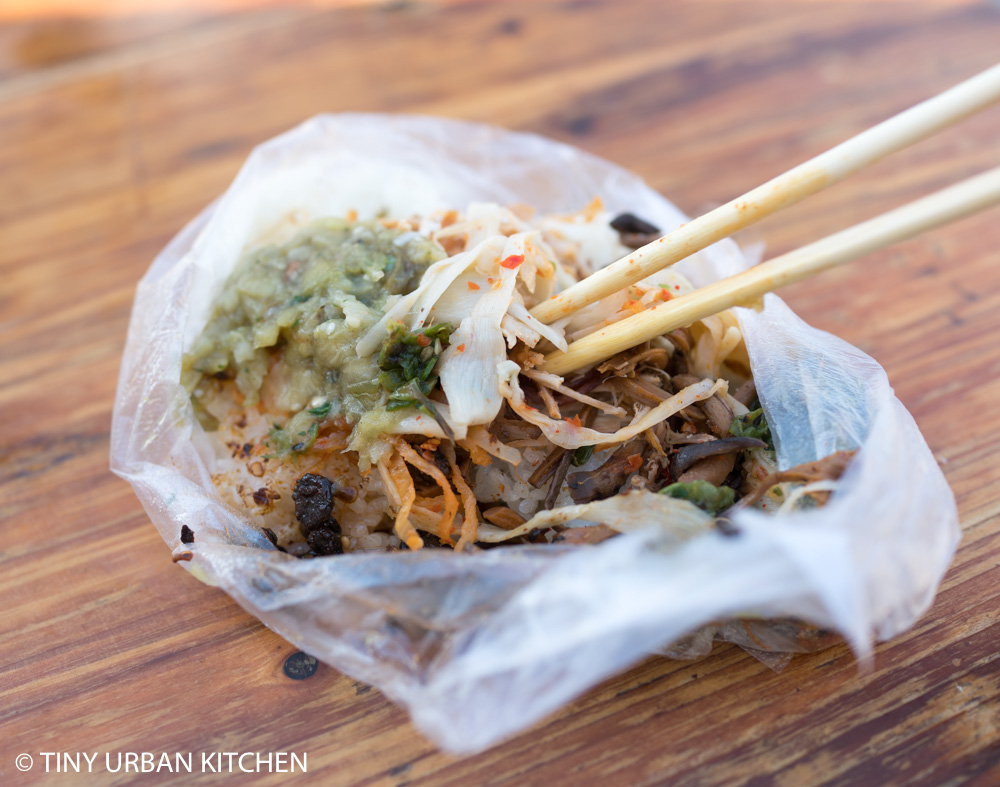
There were so many interesting flavors in that little bag, it was hard to identify them all. We very much enjoyed this green roasted eggplant spread (sort of like Mediterranean baba ganoush) as well as the tart pickled vegetables.
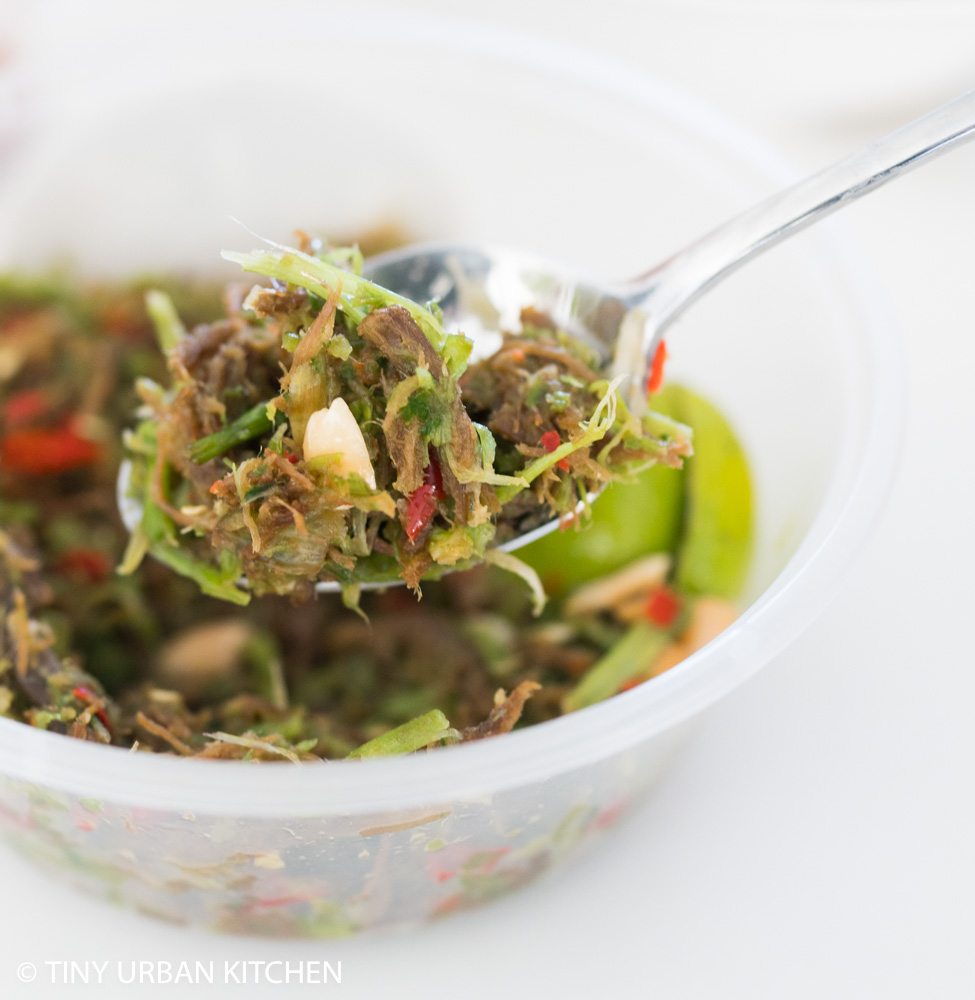
Ganba is their version of beef jerky or beef floss. Meat is dried over coals and then shredded and pounded with a mortar and pestle together with herbs and chili. I loved the bright flavors from the mixture of herbs, and they do eat spicy!!
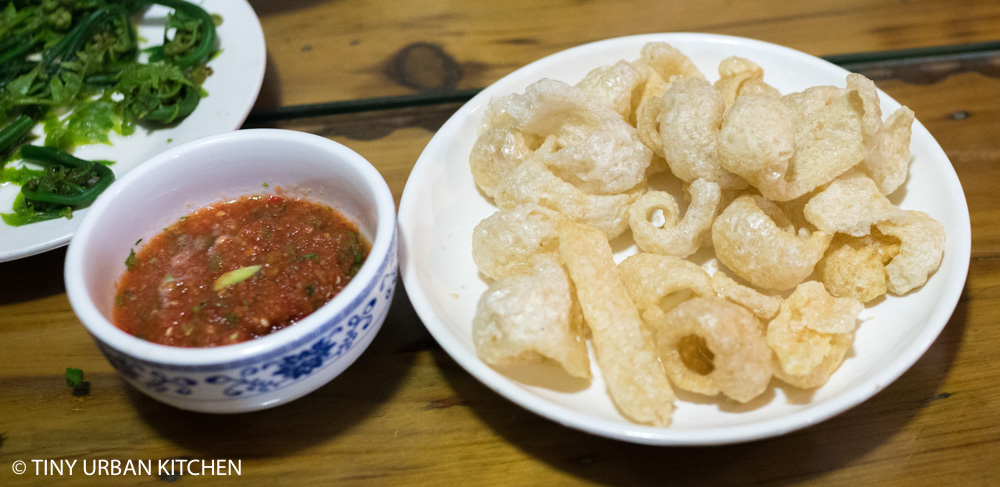
A very popular dish from Dai cuisine that you'll see all over is Tomato Nanmi. Similar to salsa, the Dai version is made from a local tree tomato 楊番茄 that's small and tart. They roast the tomatoes with garlic and then mash the whole thing up with ginger, scallions, shallots, cilantro, fresh chilis, lime juice, and salt.
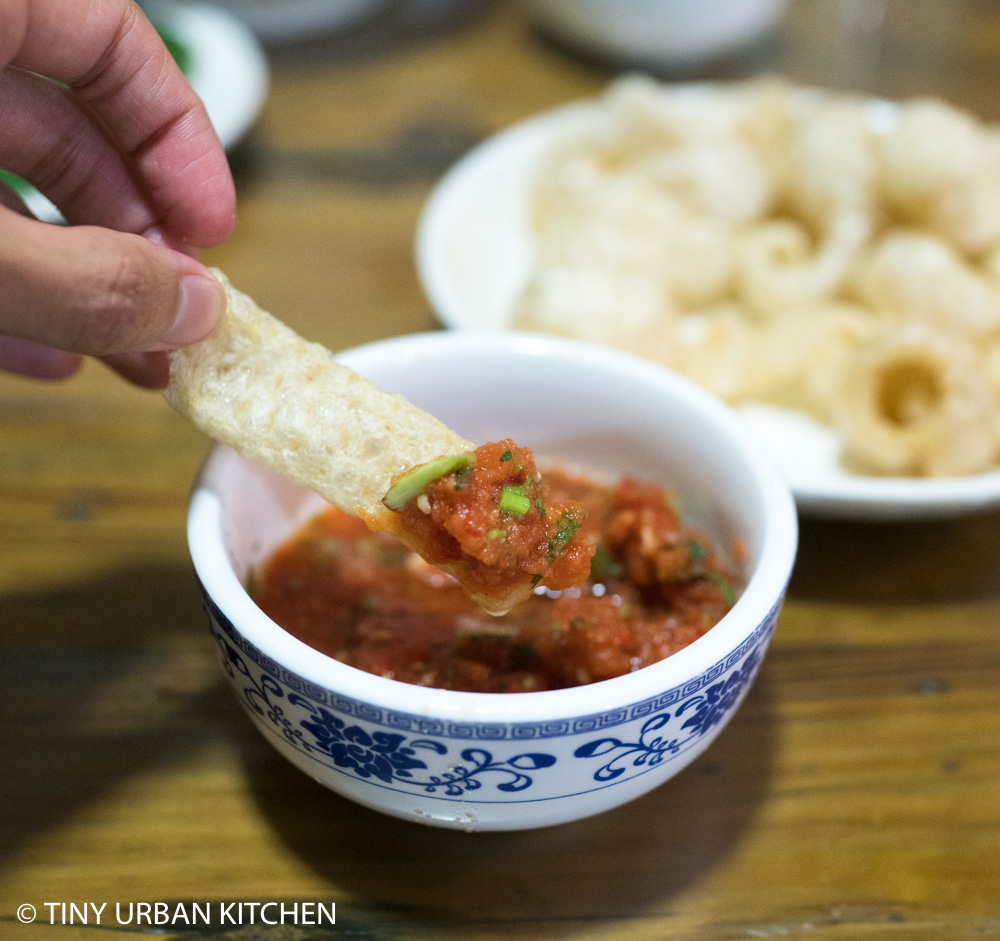
This dipping sauce works great with either raw vegetables or fried pork rinds. Yum!
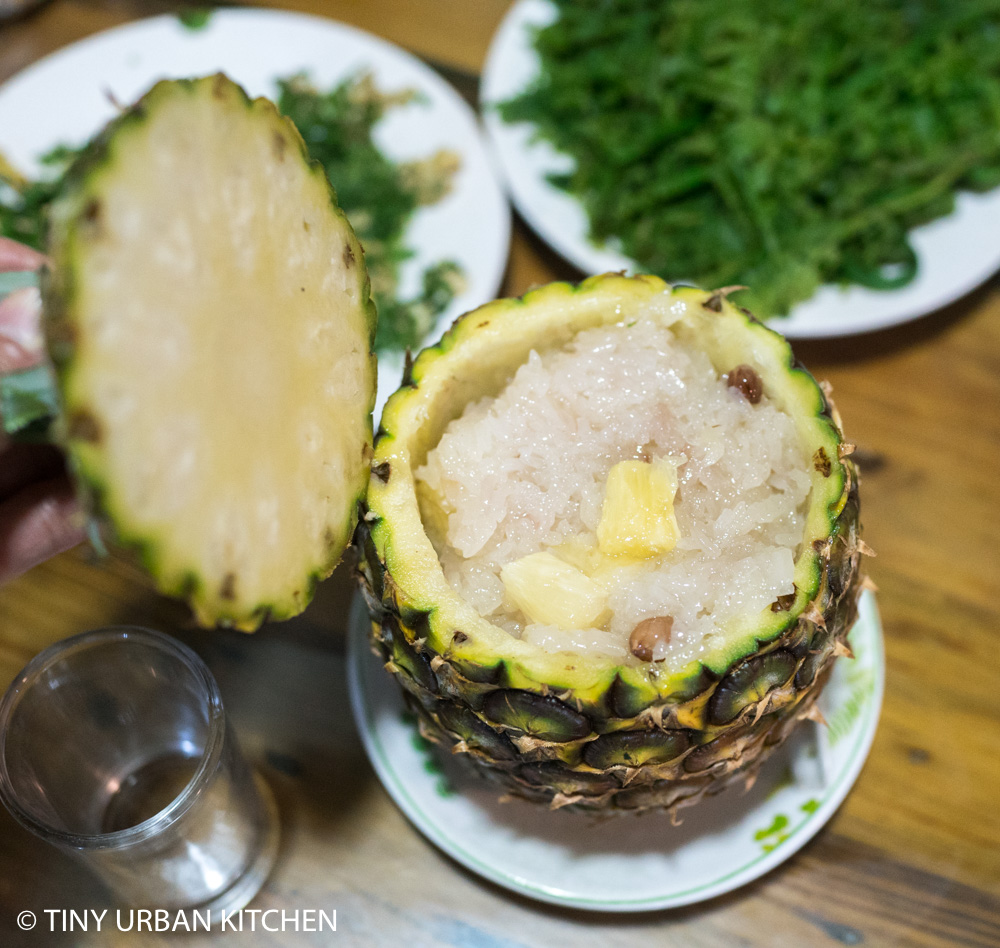
The most famous and visually striking Dai dish is Pineapple Rice (菠蘿飯), where a pineapple is hollowed out and stuffed with glutinous rice, pineapples, and cooked peanuts. Some versions of this dish use purple glutinous rice, which looks even more exotic! The rice is typically sweetened with granular sugar. Our friends don't let their kids eat this until after dinner because it's basically like a dessert - much more sweet than salty!
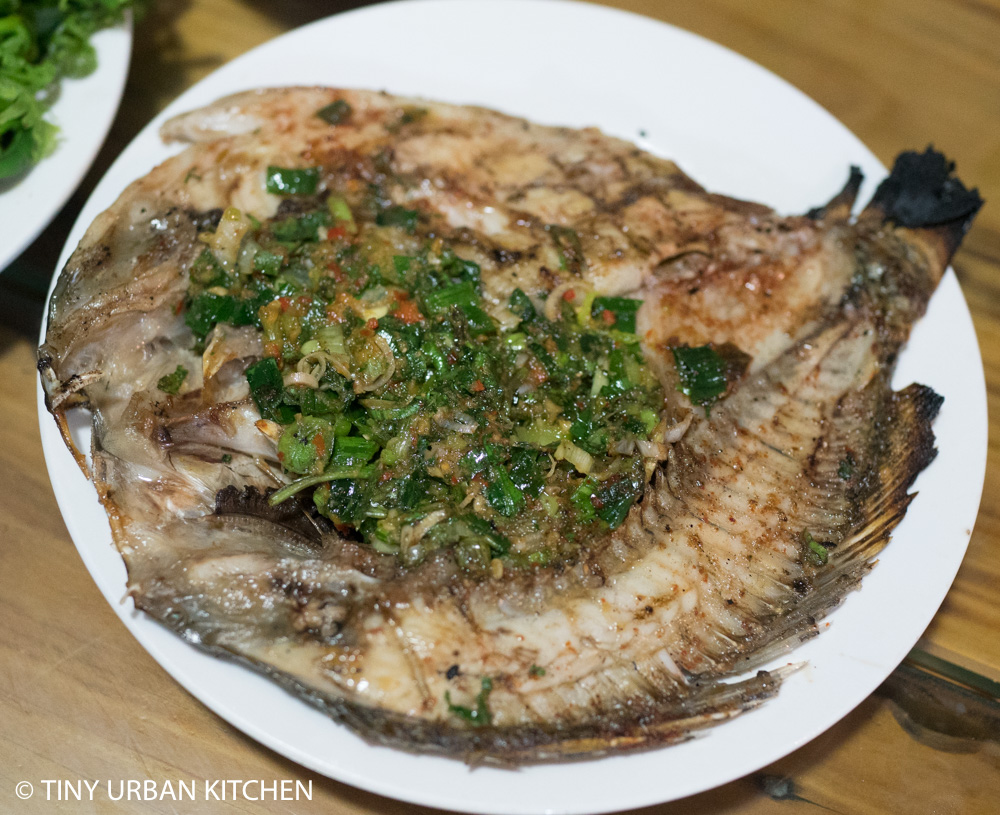
Dai cuisine is full of grilled items, and Grilled Herb Stuffed Fish is a really popular choice. They usually split the fish open and stuff it with loads of scallions, ginger, garlic, cilantro, and chili. The resultant dish is wonderfully fragrant, both from the charred fish as well as from the fragrant herbs.
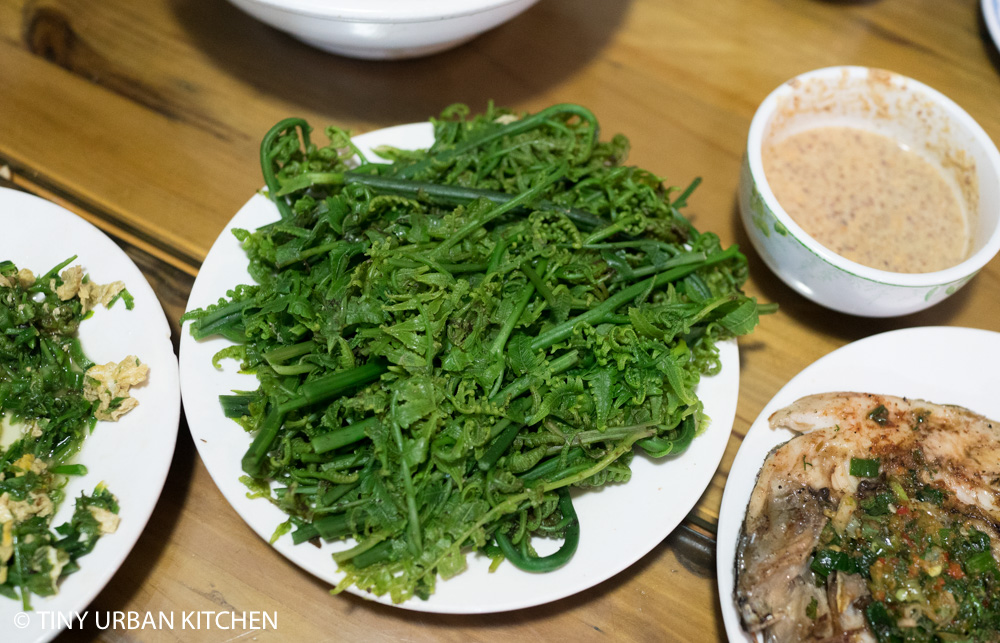
Yunnan Province has tons of wild plants, and foraged greens are widely eaten. This foraged green reminds me of Fiddlehead Ferns. The Dai prepare it in various ways, such as simply blanched and served with a peanut dipping sauce (above) or stir fried with eggs (below).
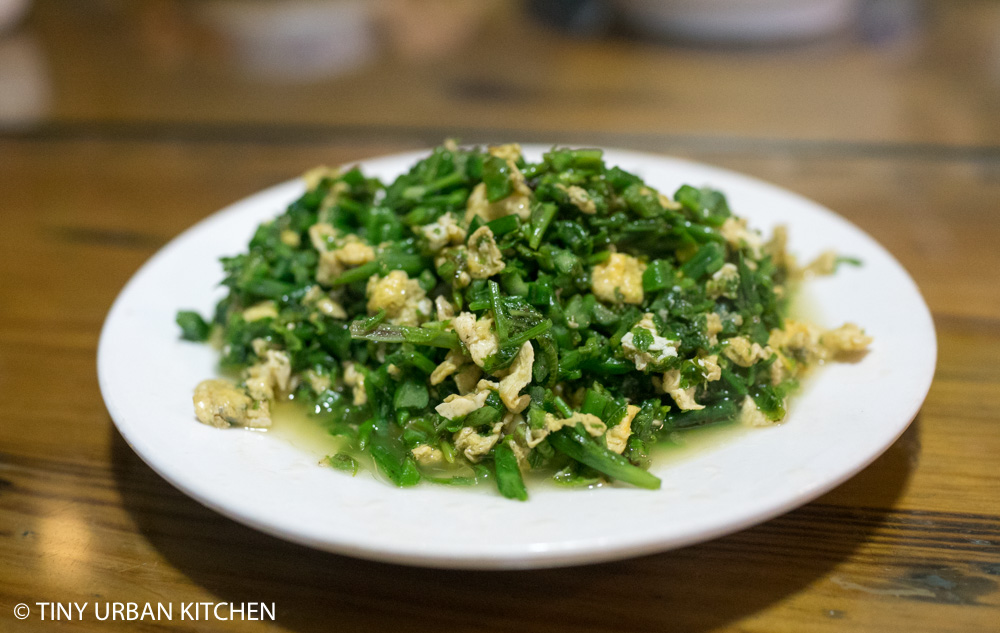
Finally, insects are pretty widely eaten in this region, and Bamboo Worms are popular because they are nutritious and mildly flavored.
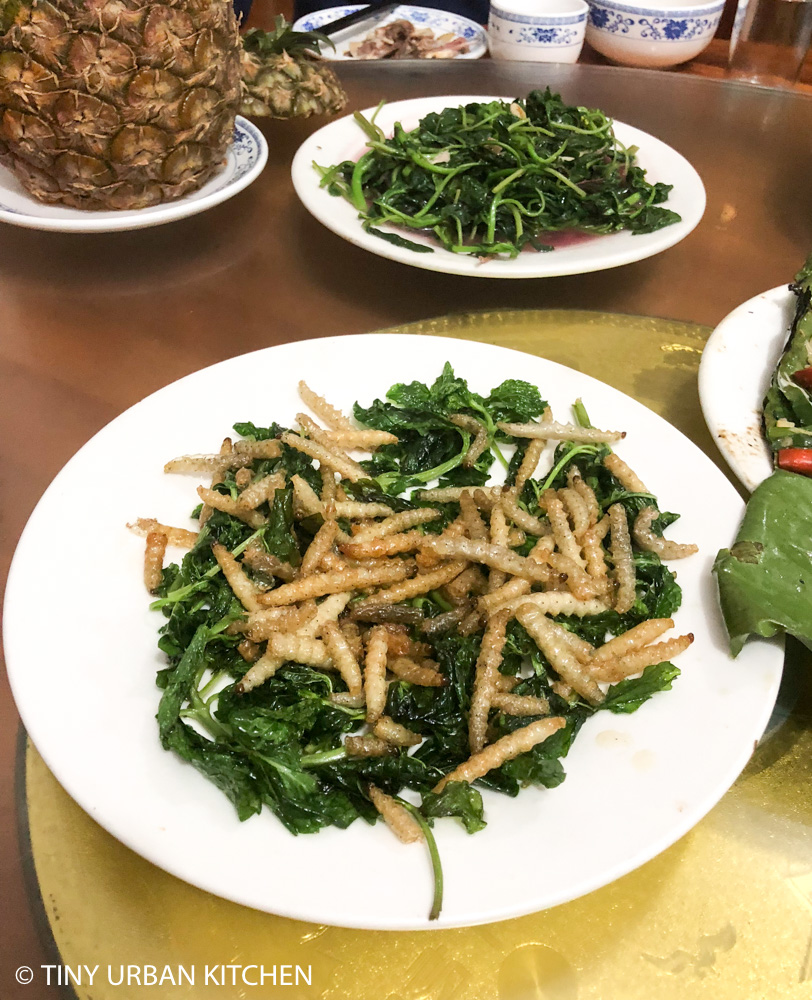
I could only muster up the courage to eat one bamboo worm.
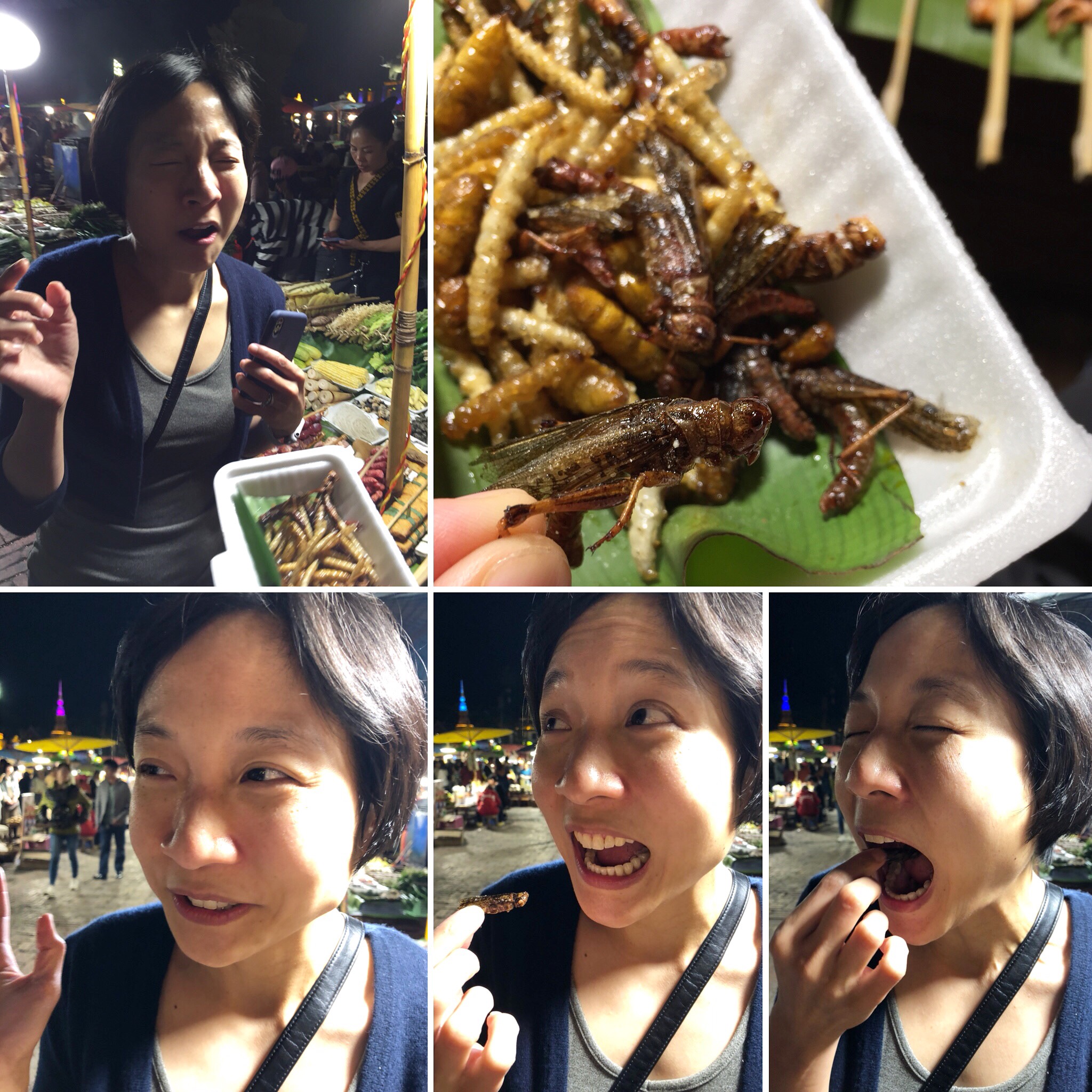
Though it actually wasn't that bad, I think it's still hard for me to get over the psychological factors of eating insects!

Rice Noodles (mi xian, 米線) are a staple in this region, and you can have it many different ways. We had it in a flavorful soup.
Other dishes that are traditional in Dai cuisine but that I did not have a chance to try include Ghost Chicken (super spicy chicken with herbs and chili), anything made withV Banana Leaf, and Bamboo related dishes, such as food cooked in hollowed out bamboo, or cooking young bamboo shoots.

Cheers!
Dai cuisine is really full of all different types of flavors. I think the combination of their love for spicy and their access to so many fresh herbs and ingredients (ha ha, including insects!) leads to a unique and vibrant cuisine that's fascinating to explore and experience.
Up next - food from the second largest ethnic minority in Xishuangbanna - Akha!
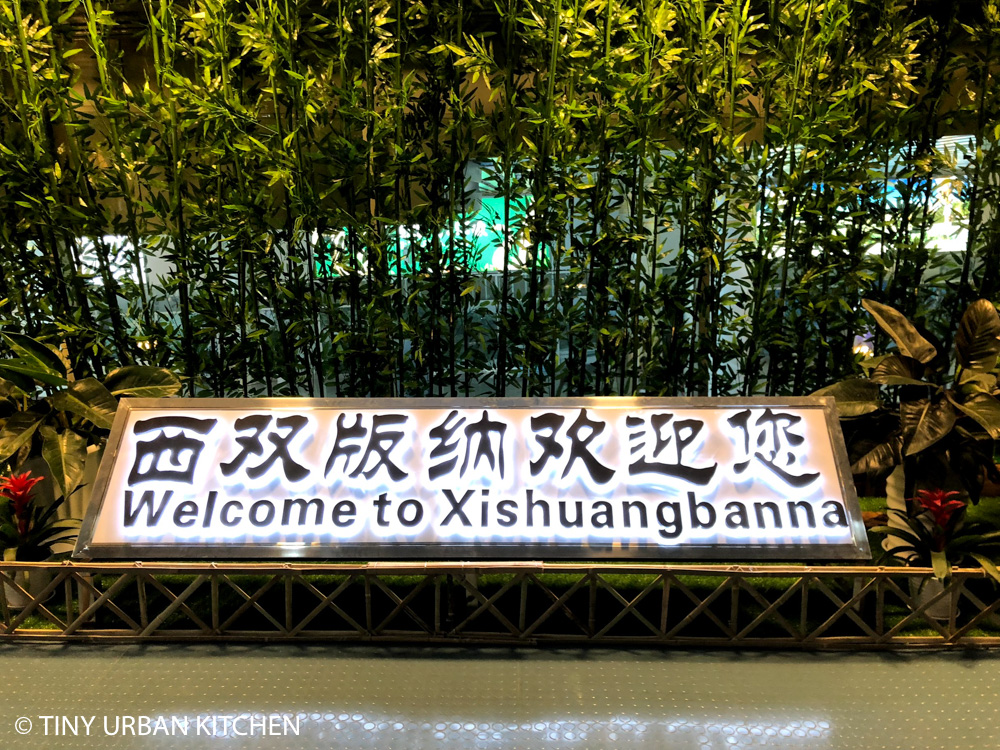









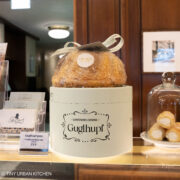

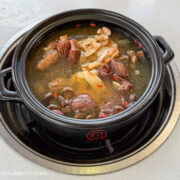

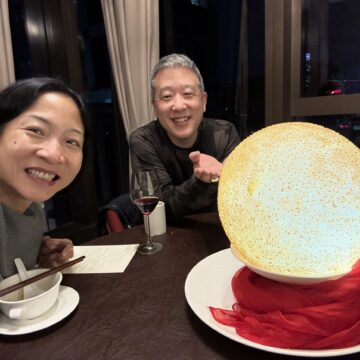
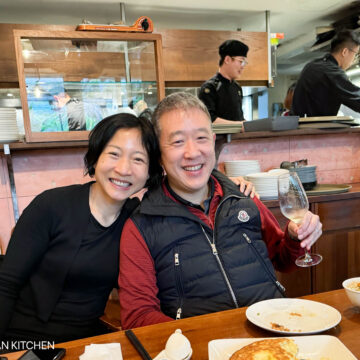
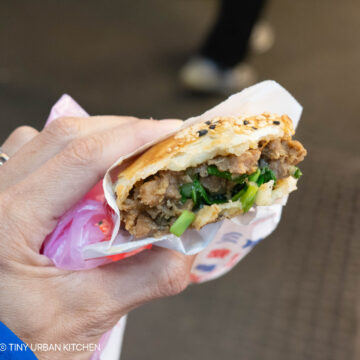

[…] We re-connect with old friends and savored local dishes from the two largest minority tribes (Dai and the Akha). I fell in love with Yunnan noodle 米線 (pictured above), enjoyed the tropical heat […]